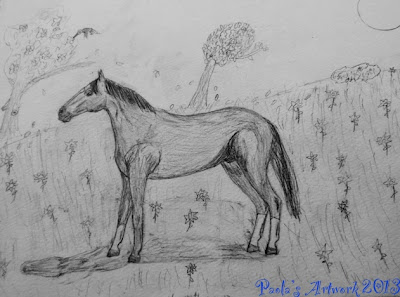After the Russian Revolution and World War I, with many equines having died in battle, the Russians needed to breed new mounts for the cavalry officers. Marshall Semyon Budenny, a respected Soviet general, began trying to create a perfect officer's mount in 1921. He looked for horses with favored characteristics–strength, sure-footedness, controllability, maneuverability, and spirit. Furthermore, the horse had to be be to survive on scanty rations and still be ready for action the next day.
They achieved creating such a horse by crossing the Don, a native cavalry horse that traces back to Thoroughbreds, Arabians, and Russian Orlovs, with the English Thoroughbreds that had come over as racehorses in 1885. The best of the offspring was sent to the Budenny(pronounced bood-yo-nee) Higher Cavalry School, where they received training before becoming cavalry horses. Of this small amount of horses, only 10% of the mares and 5% of the stallions were accepted as suitable breeding stock. In 1948, the horses were recognized as a breed and was named Budenny. In 1953, though, the USSR Calvary disbanded, changing the Budenny's role from a war horse to a sport horse.
 |
| If you really look at the Budenny, you can see the Thoroughbred in it. source |
Today, only 2,500 Budennies have been registered, with only 600 of them being mares.
Breed Description and Uses
The Budenny has received the best qualities from both the Thoroughbred and the Don. From the Thoroughbred came its flowing, agile movement; its long neck; its slender, strong legs; large bones, and pretty head, while it inherits its hardiness and calm from the Don. Standing around 16 hands high, the Budenny usually comes in various shades of chestnut, also inherited from the Don. One peculiarity of the breed is that it has the same metallic sheen in its coat as the Don and the Akhal-Teke.
The Buddenny's temperament, intelligence, and trainability make it an excellent war horse. Often, it is known as a one-person horse because it bonds so deeply with its handler, bravely doing anything for him, whether that be bravely marching into battle or boldly soaring over fences. Also, Budennies are smart enough to think independently should their rider be otherwise occupied. At the same time, though, they will do what their rider asks of them, even if they had made another choice.
The Budenny excels in dressage, jumping, steeplechase, and eventing, though its ability to recover quickly from a hard exercise makes it an ideal mount for almost any sport.













